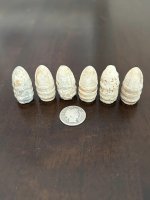As a newbie I've been collecting advice from a lot of threads over the last while trying to learn about metal detecting. I've been cutting and pasting and saving them on my computer. I'm going to post them here if that's cool. If anyone wants to add more please feel free. They are not well organized though.
Upvote
0






